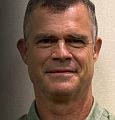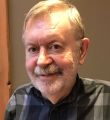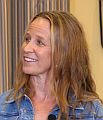GREEN INFRASTRUCTURE JOURNEY IN THE CITY OF DELTA: “Before, emphasis was on THE WHY. Now we are getting better at THE HOW,” stated Harvy Singh Takhar, Utilities Engineer with the City of Delta in Metro Vancouver

“We have done a lot of back and forth on road designs. The streetscape enhancement ideology is being implemented at the forefront rather than through a review of utilities to see whether there any drainage concerns. The road designers are taking the initiative to incorporate curb cuts and even linear rain gardens. Their understanding of the need has evolved through internal collaboration. By working with the roads people on curb cuts, we have actually come up with variations. Our original detail was quite generic. Now we are able to implement it in various types of curb designs,” stated Harvy Takhar.
DOWNLOAD A COPY OF: “Living Water Smart in British Columbia: Delta’s rain garden program for streetscape revitalization” – released by the Partnership for Water Sustainability in April 2024

“Historically, drainage has been an afterthought in urban planning decisions. Neighbourhoods were developed without thinking about drainage in a broader watershed context. Circa 2000, however, the emphasis became let’s look at this on a watershed basis. For municipalities like Delta with well-developed infrastructure, this meant figuring out HOW to retrofit and redesign drainage systems. Road rights-of-way account for one-third of the land area of a typical urban watershed, Commitment to a rain garden program would make a material difference over time,” stated Hugh Fraser.
CONVENING FOR ACTION AT THE 2024 BC LAND SUMMIT: “Streams need a place to be. If we cannot get our heads around that, we are not going to keep our streams,” stated Tim Pringle, a founding director and Past-President of the Partnership for Water Sustainability

“Because nature is a system, you cannot slice and dice it. EAP recognizes this and is a financial tool to give streams the support they need to survive. EAP provides a value picture of a stream system as a land use. How are Blue Ecology and EAP interconnected? Blue Ecology emphasizes the social perspective for protecting watersheds and streams. EAP shows how to achieve that outcome. EAP builds on the ‘big idea’ that use and conservation of land are equal values. Where Blue Ecology and EAP come together is in recognizing the importance of water and ecological assets in those two contexts,” stated Tim Pringle.
CONVENING FOR ACTION AT THE 2024 BC LAND SUMMIT: “EAP, the Ecological Accounting Process, is an expression of Blue Ecology. Both are all about a restorative framework and mindset,” stated Richard Boase, career environmental champion within local government

“We must do a better job of protecting streams. I am in a position now to reflect on this because I believe I have earned that right over the course of a 30-year career. Given how much I have seen, done and been exposed to in my local government career, it is fair for me to reflect on what has happened and comment on why local governments have not been as successful as we would have wanted. But we must focus on the path forward so that we protect or enhance stream systems in the built environment,” stated Richard Boase.
CONVENING FOR ACTION IN BRITISH COLUMBIA: “The ecosystem-based approach is needed more than ever to adapt to weather extremes,” stated Susan Haid, career environmental and urban planner in BC local government, and adjunct assistant professor at the University of BC

“In many ways, what I am teaching comes back to the same kind of framework around ecosystem-based planning which Erik Karlsen and others were advancing in the 1990s, and which is synonymous with watershed-based planning,” stated Susan Haid. “Titled Policy for a Sustainable Region, it is big picture and is about policy frameworks to influence urban design. A lot of it is case studies and reflection. But I also bring in resiliency and ecological frameworks, with lectures on what are the best practices going forward. I call these sessions SHARPENING THE EDGE.”
DOWNLOAD A COPY OF: “Living Water Smart in British Columbia: Policy frameworks to shape urban design” – released by the Partnership for Water Sustainability in April 2024

“In late 1996, in came Erik Karlsen from the Province as the spokesperson for the first Fish Protection Act. He convened discussions with environmental, engineering and planning staff. Those were such fantastic discussions. There was a really good alignment and call to action on making streamside regulation work. It was a major advancement but a lot of stress as well. Streamside regulation was being portrayed as a huge land grab. There was a lot of back and forth to move from something that was site-specific to more of a hardline edict with the province,” stated Susan Haid.
PATH FORWARD FOR GROUNDWATER IN BRITISH COLUMBIA: “Unless it is legislated, it is not a priority for government,” states Mike Wei, former Deputy Comptroller of Water Rights

“Unless you have legislation that tells you what the important requirements are, it is very hard to go forward. Legislation drives scientific questions; in turn, science informs legislation. It is not a one-time thing, but rather iterative. The science forward approach which some academics advocate is a good idea but has practical challenges. One of the challenges with science forward is if it is not legislated, it is not a priority for government. Also, you do not know what the hydrologic values are going to be 30 years from now. So it is very hard to figure out what questions to ask,” stated Mike Wei.
DOWNLOAD A COPY OF: “Living Water Smart in British Columbia: Look beyond water flowing downhill” – released by the Partnership for Water Sustainability in March 2024

“It got my attention when Mike Wei pointed out that the 1200 aquifers in BC are typically tiny. The median size is about twice the area of downtown Vancouver. And so they are ignored because they are not viewed as important. But you live and die at that scale. So, what is the path forward that Mike Wei suggests? Well, it has three elements that make sense to me: deploy the legislative framework to ask the right questions; use the battleground watersheds for scientific research; and protect the local interest and do it well, and do it well everywhere,” stated Kim Stephens.
DOWNLOAD A COPY OF: “Living Water Smart in British Columbia: Hope and optimism do make a difference” – released by the Partnership for Water Sustainability in March 2024

“The Comox Lake Watershed Protection Plan is truly a collaborative outcome. And most importantly, it is currently fully funded, although without a dedicated watershed service, this funding depends on the support of our elected officials. Because the advisory group represented a broad variety of interests, the plan has a very high level of community support. The watershed plan is a living document. We made that clear upfront. We also committed to revisiting the content as necessary to keep the plan relevant and to address changing conditions,” stated Zoe Norcross-Nu’u.
KEEP IT SIMPLE, PRACTICAL AND IMPLEMENTABLE: “When an organization is not functioning very well, you fix it one piece at a time. After that, you can finetune the pieces,” stated Pete Steblin, former City Engineer and City Manager

“It takes a decade to create a good culture in an organization. But you can destroy it in a year with the wrong political leadership. To keep it going, you must continue to do good things. It takes good ideas. But it also takes a Council that is supportive of the good ideas. And it takes money to follow through and implement those ideas. Instill a culture of continuous improvement and giving back to the community so that the community elects good, well-meaning people. It is a cycle. If you keep that cycle going, there is no end to it,” stated Pete Steblin.

